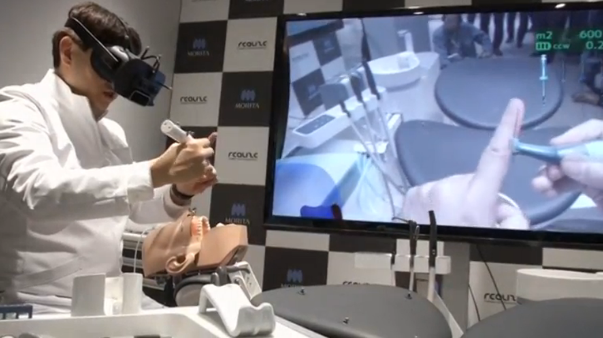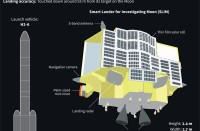
(Reuters) — A Japanese dental equipment manufacturer has developed a prototype mixed reality (MR) dental treatment simulation system.
J. Morita Co. demonstrated the technology to Japanese media last Friday (April 21).
The company says its technology is the world’s first dental treatment simulation to use MR, combining augmented reality (AR) with virtual reality (VR) technologies.
The system is devised to help dentists learn much of their trade without the need to practice on real patients.
Trainees use practice models in real dentist chairs and are guided by computer-generated (CG) images in the virtual space.
Inside the dentist’s head-mounted display, a stereo camera shows videos of oral cavities. The CG images also display information about the nerves and blood vessels of individual teeth, helping them learn how to avoid unnecessarily treating healthy teeth.
The head mount also provides medical records and background information for each patient.
“I hope this technology will give more visual information, and help students imagine and understand what needs more caution during practice surgeries, by revealing more information on non-visible areas. This is something a textbook can’t offer,” J. Morita’s CEO Haruo Morita told Reuters.
It was developed by dentists Tsutomu Kubota and Gaku Yoshimoto, in conjunction with Realize Mobile Communications Corp.
“Usually, we would have to use our imagination to determine the area that needs treatment (while looking at an x-ray), and then sync that information with what we are physically seeing in our patients – a process that required experience, intuition, and good sense. But the merit behind this technology is that anyone can see the same information and implement treatment safely,” Kubota said.
Other dental simulators have used either AR or VR, but never both together.
Morita said the prototype needs further software development before it can be introduced to universities and hospitals for training purposes. The company expects to develop the prototype into a product within two years.







